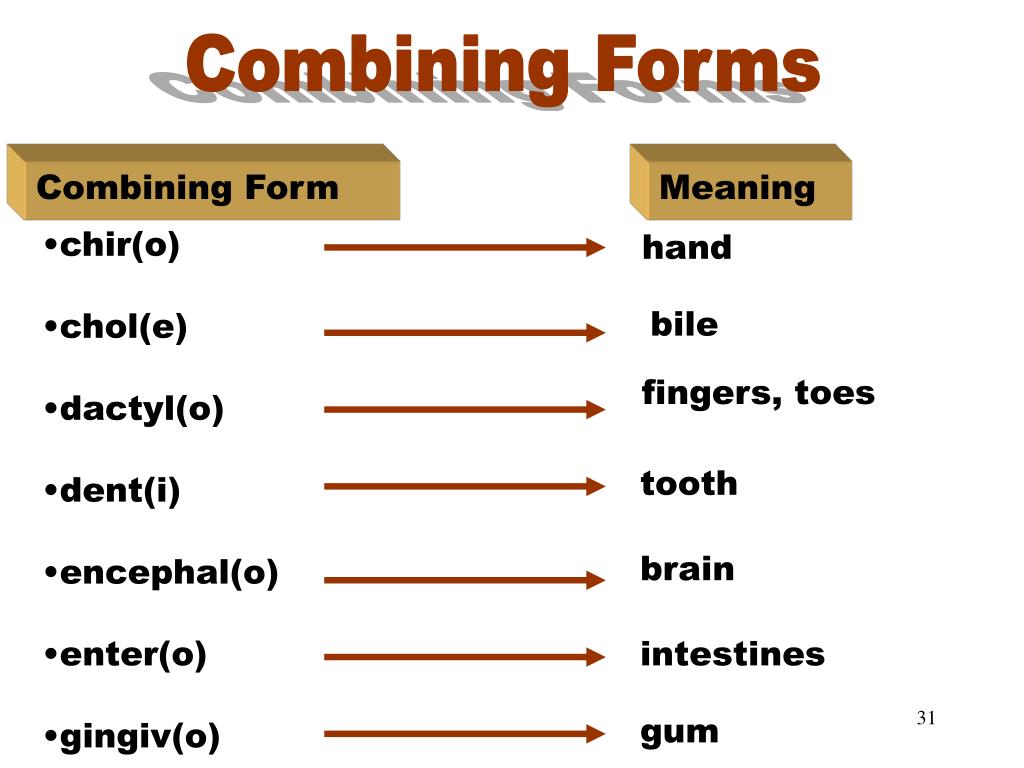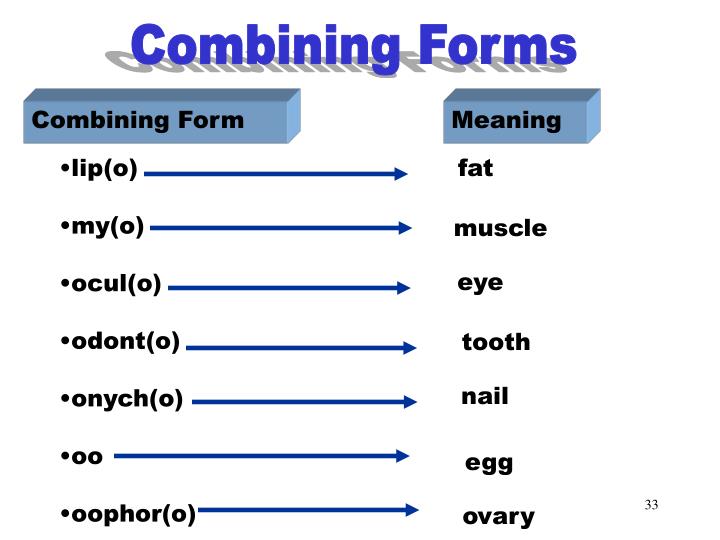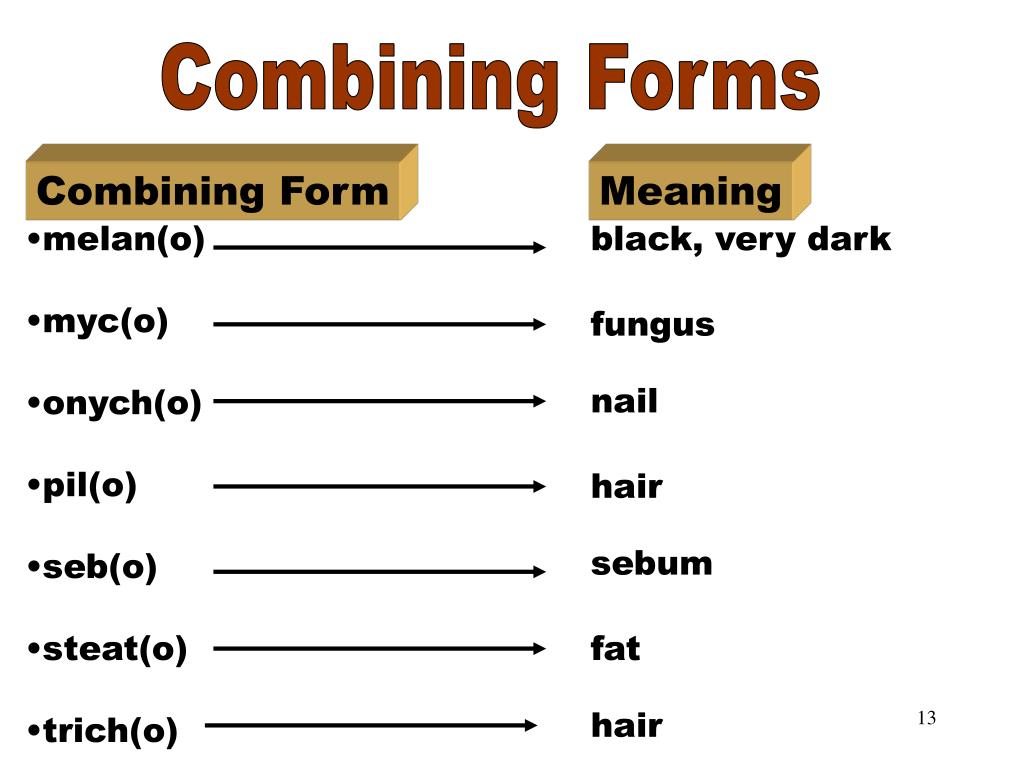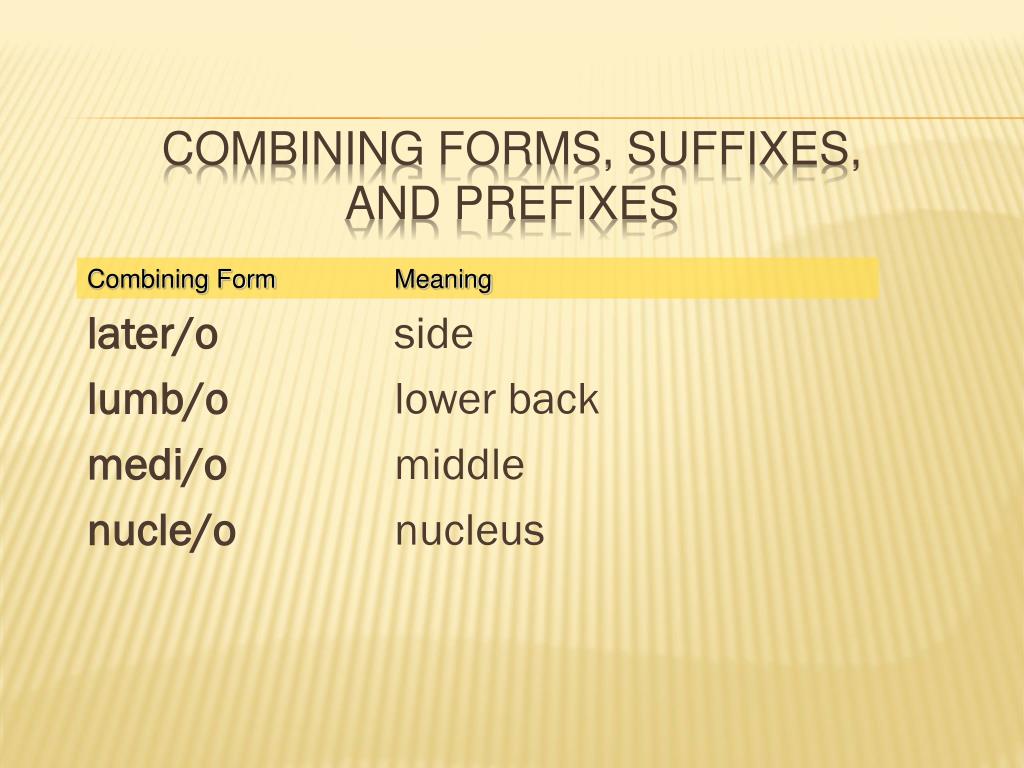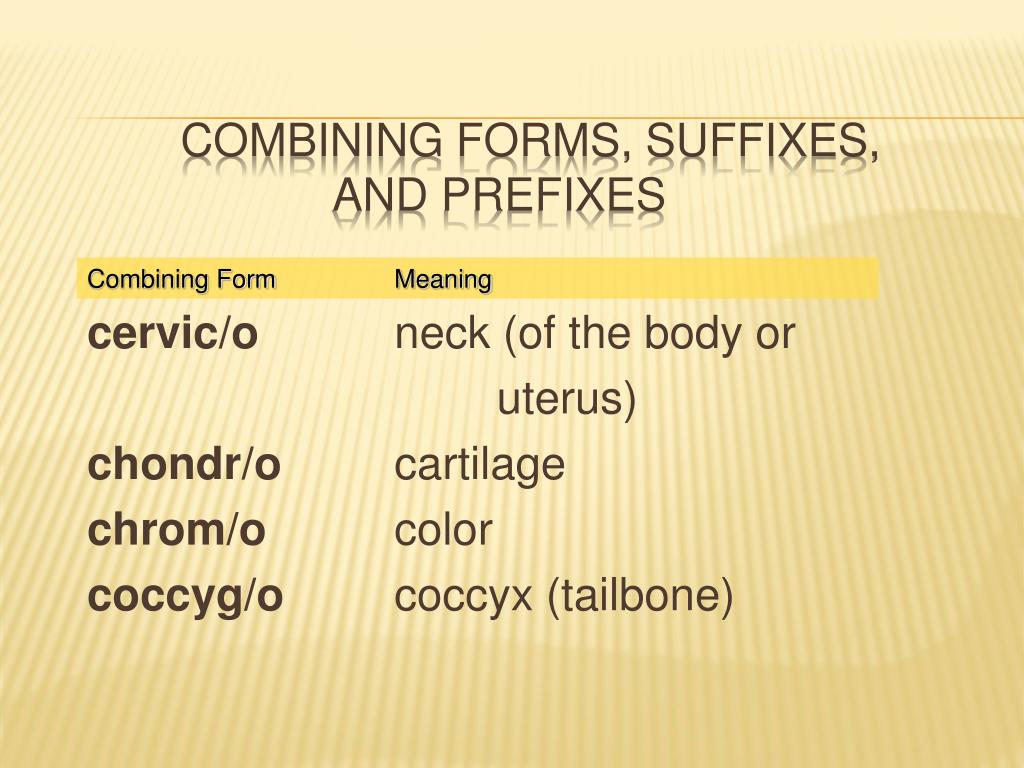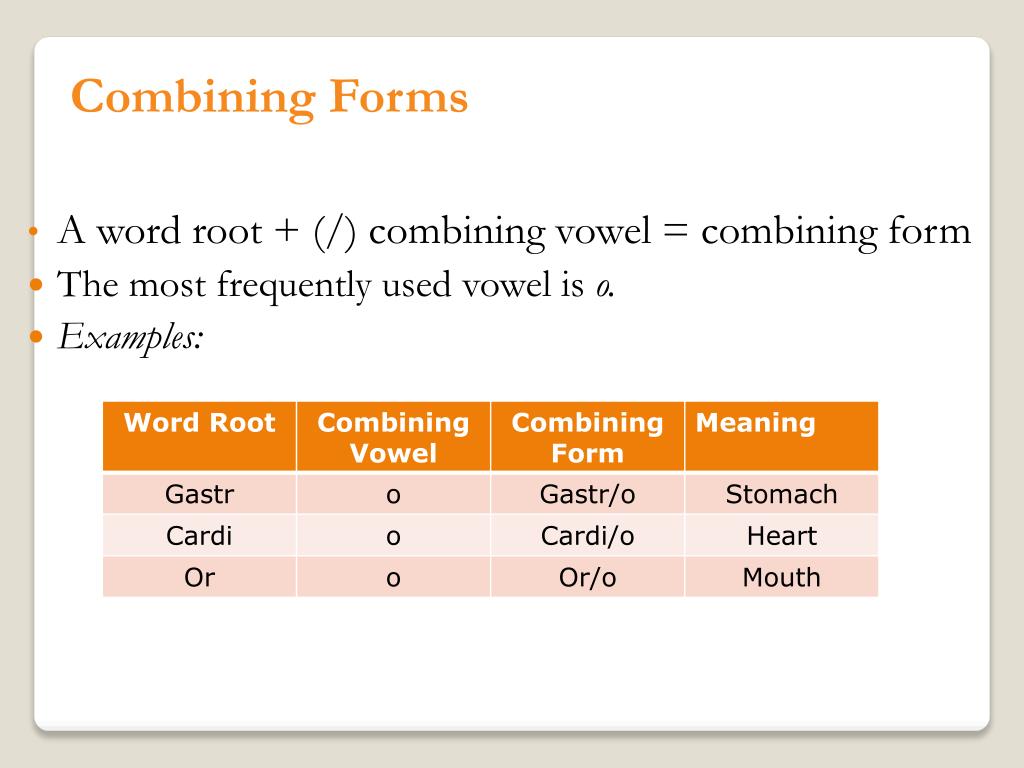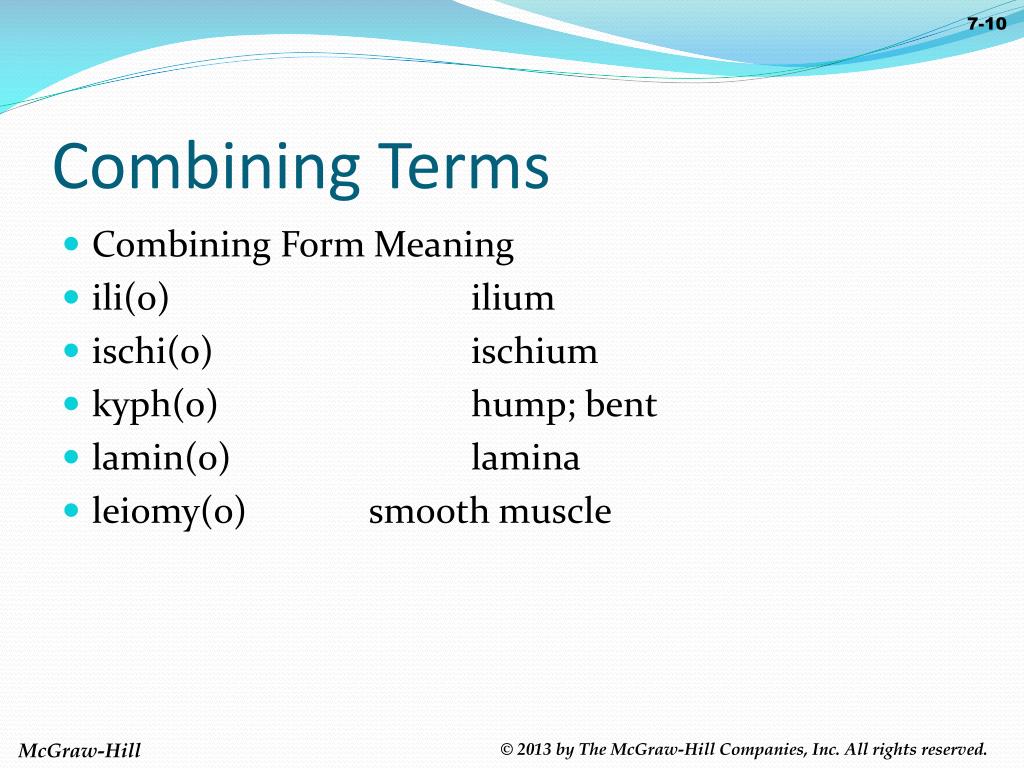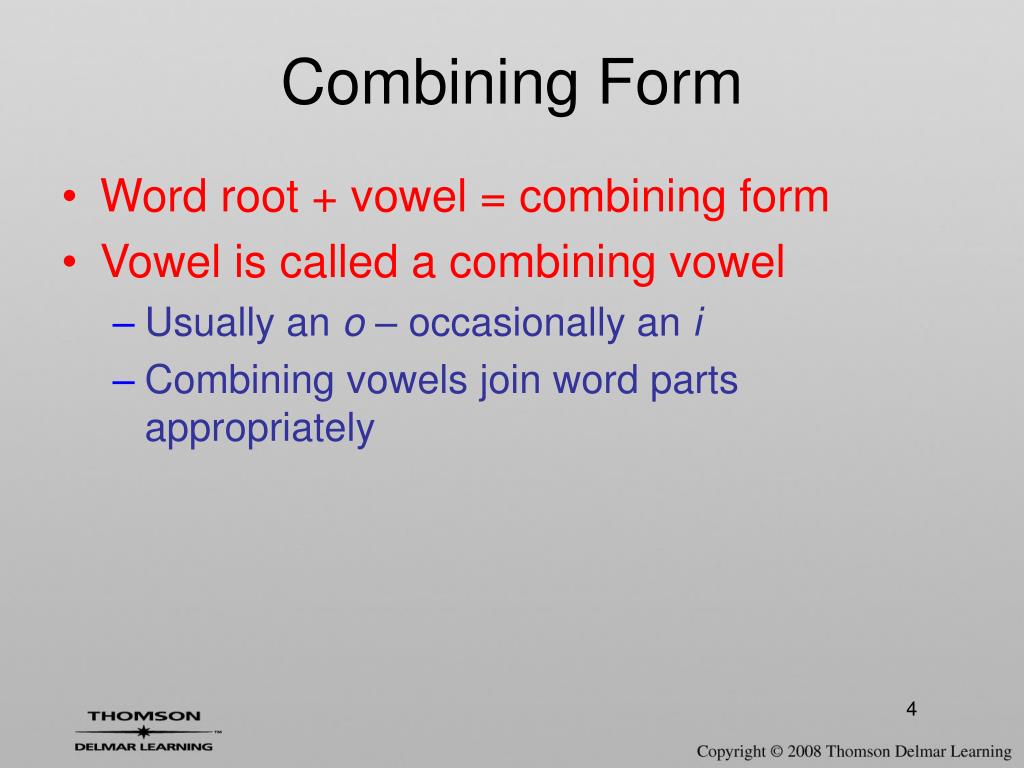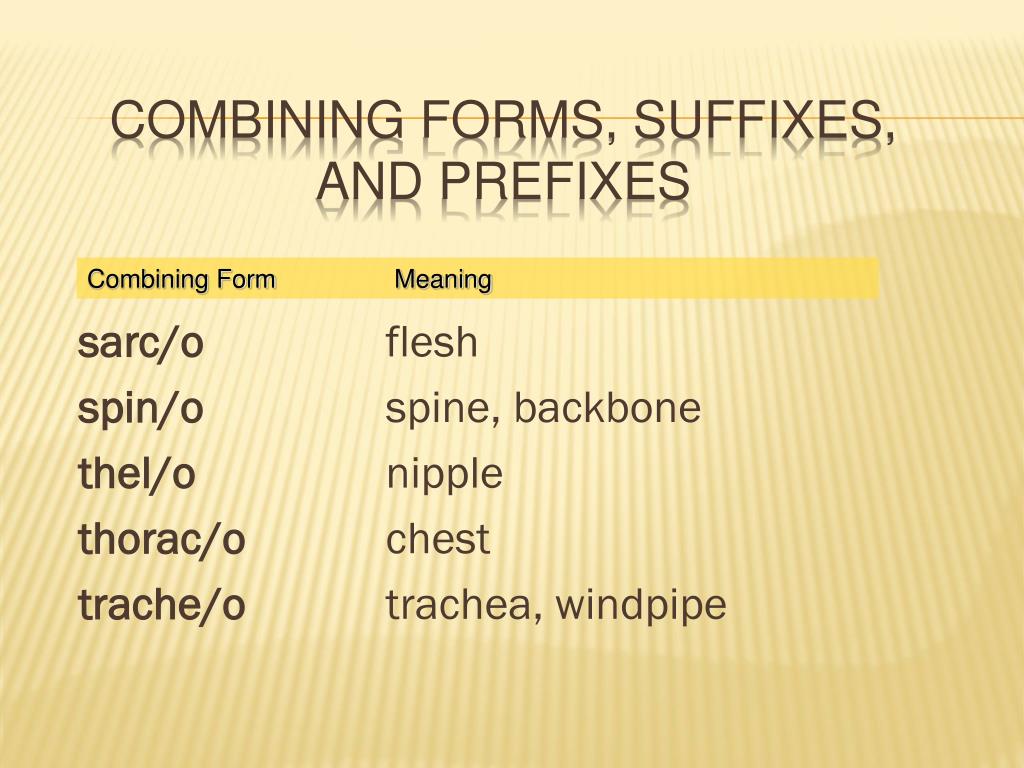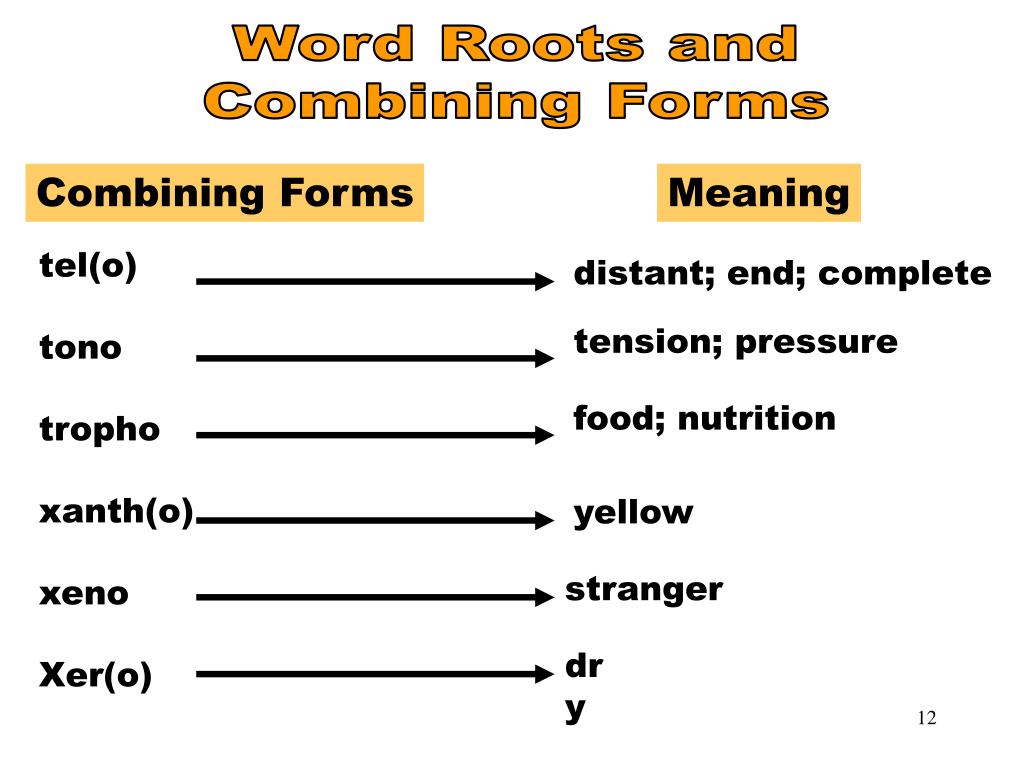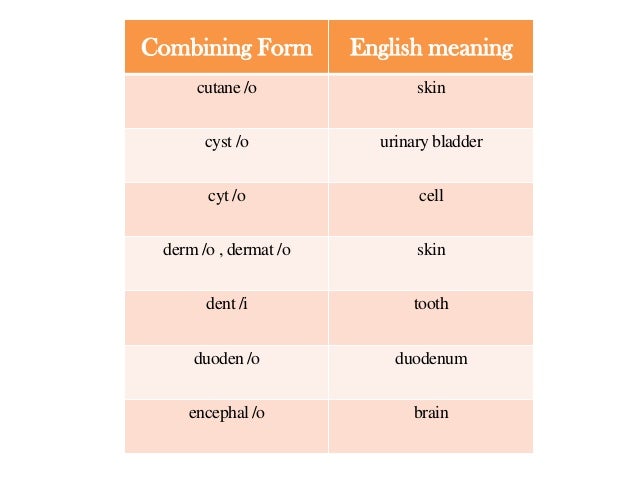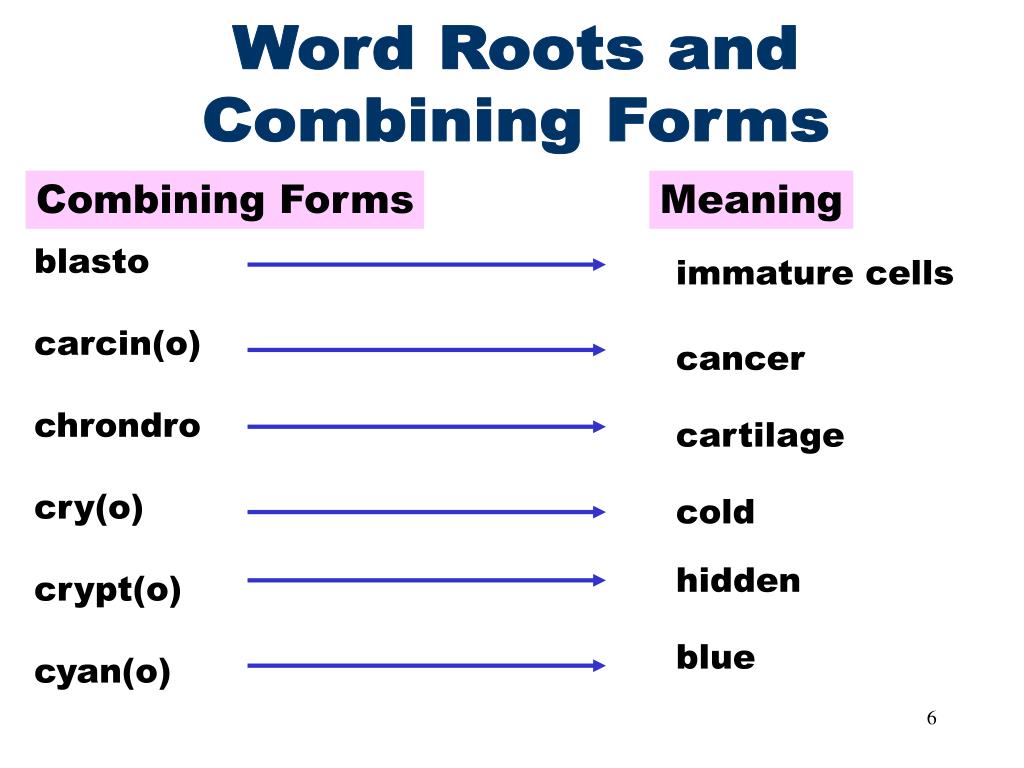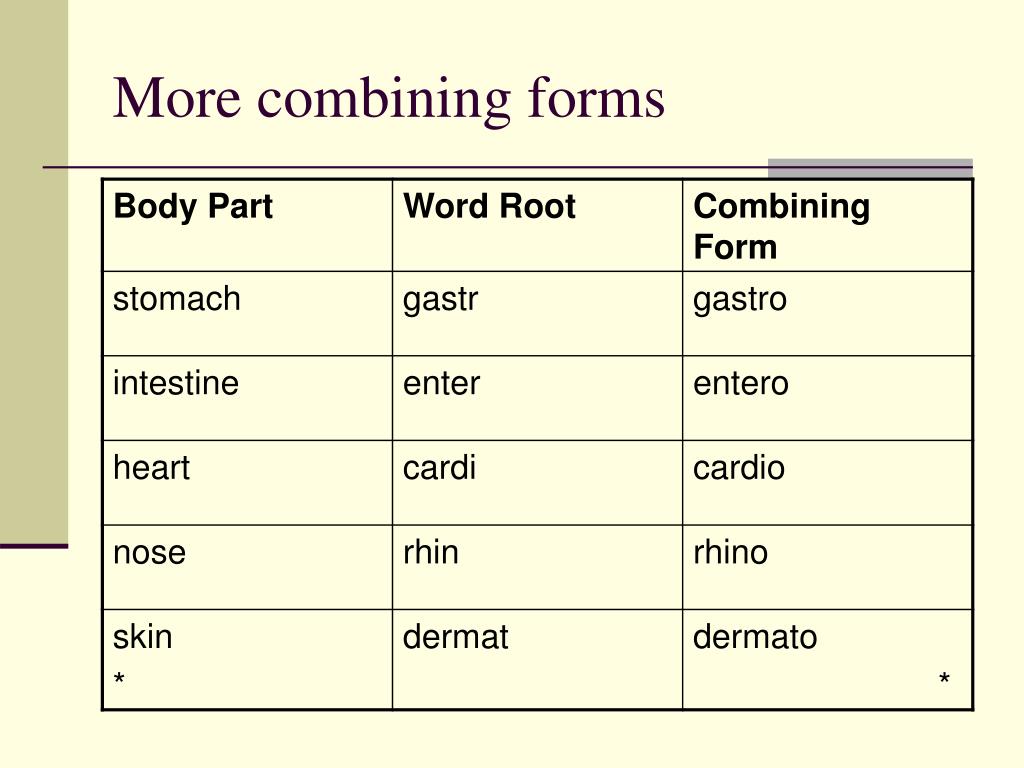Is The Combining Form Meaning Large Or Long
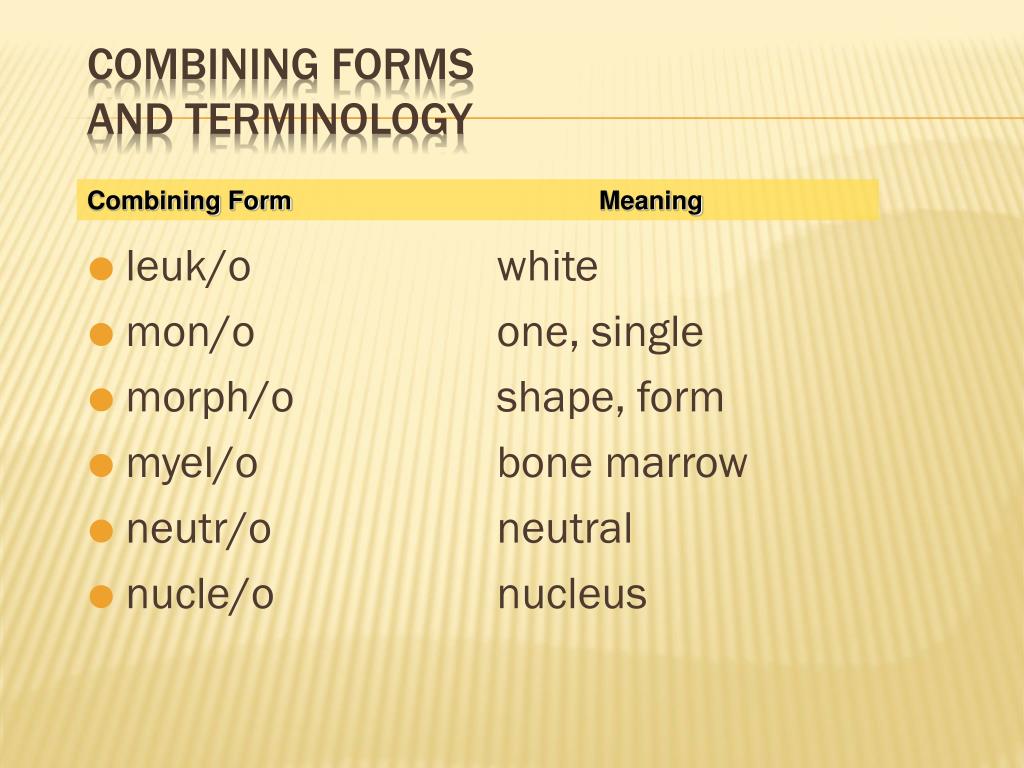
The world of medical terminology, often perceived as a labyrinth of prefixes, suffixes, and combining forms, can be surprisingly ambiguous. One such area of confusion revolves around combining forms denoting size and dimension. Is it "macro-" or "mega-" that indicates something large? Or does "dolicho-" signify length, and if so, how does it differ from other prefixes implying elongation?
This article delves into the nuanced meanings of several combining forms commonly used to describe size and length, providing clarity on their proper usage within medical and scientific contexts. Understanding these distinctions is crucial for accurate communication and interpretation in healthcare, research, and related fields.
Differentiating Size: Macro-, Mega-, and Magni-
The combining forms "macro-", "mega-", and "magni-" all suggest largeness, but they do so with subtle yet important differences. "Macro-" generally refers to something large enough to be visible to the naked eye or pertaining to a large scale or system. This can be seen in terms like macroeconomics or macromolecule.
"Mega-", on the other hand, often denotes a quantity or magnitude significantly larger than the standard. It's commonly used in scientific and technological contexts to signify millions, as in megabyte or megawatt. Medical usage is less frequent, but it appears in terms like megacolon which means large colon.
"Magni-" implies greatness or importance, rather than sheer physical size. It is found less frequently in medical and scientific terminology than "macro-" or "mega-". An example of its use could be in a phrase like magnificent improvement, referring to a significant positive change.
Understanding Length: Dolicho- and Other Prefixes
When it comes to describing length, the combining form "dolicho-" is particularly relevant. It specifically indicates that something is longer or more elongated than normal. For example, dolichocephaly describes an abnormally long and narrow head shape.
Several other prefixes can also convey a sense of length, albeit with slightly different connotations. "Longi-", directly translates to long. It appears, for example, in the longissimus muscle which refers to the longest muscle.
It’s important to consider the context when interpreting these prefixes, as their meanings can overlap depending on the specific term being used. Some authors may use dolicho- and longi- interchangeably, though technically, dolicho- suggests an abnormal length while longi- simply denotes length.
Implications for Medical Professionals and Researchers
Precise understanding of these combining forms is paramount for healthcare professionals. Misinterpretation of medical terminology can lead to inaccurate diagnoses, inappropriate treatment plans, and potentially adverse patient outcomes. A doctor misinterpreting the term dolichocolon, which means an abnormally long colon, might delay treatment of a related medical condition.
Researchers also rely on accurate terminology to communicate their findings effectively. Clear and unambiguous language is essential for reproducibility and for ensuring that scientific discoveries are properly understood and applied. Precise terminology allows for clarity in medical studies, so each study can be correctly understood.
Furthermore, a strong grasp of medical etymology can aid in the memorization and comprehension of complex medical terms. By understanding the roots of words, students and practitioners can more easily decipher their meanings and retain the information more effectively.
Resources for Further Learning
Numerous resources are available for those seeking to deepen their understanding of medical terminology. Medical dictionaries, such as Stedman's Medical Dictionary and Dorland's Illustrated Medical Dictionary, provide comprehensive definitions and etymological information. These dictionaries can be an invaluable resource for healthcare students and other medical staff.
Online resources, such as medical terminology courses and interactive quizzes, can also be helpful for learning and reinforcing knowledge. Professional organizations, such as the American Medical Association and the American Academy of Family Physicians, often offer educational materials and continuing medical education opportunities related to medical terminology.
Ultimately, a continuous commitment to learning and refining one's understanding of medical terminology is crucial for ensuring accuracy and effectiveness in healthcare practice and research.
Conclusion
The seemingly simple question of whether a combining form signifies "large" or "long" opens a gateway to a complex and fascinating world of medical etymology. While "macro-", "mega-", and "magni-" all suggest different aspects of size, "dolicho-" specifically indicates abnormal length.
By appreciating these subtle distinctions, healthcare professionals, researchers, and students can enhance their communication skills, improve their understanding of medical concepts, and contribute to a safer and more effective healthcare system. This understanding will lead to better patient care and better understanding of medical conditions.
Investing time in learning about these nuances is a worthwhile endeavor, paving the way for greater clarity, accuracy, and ultimately, better patient care.
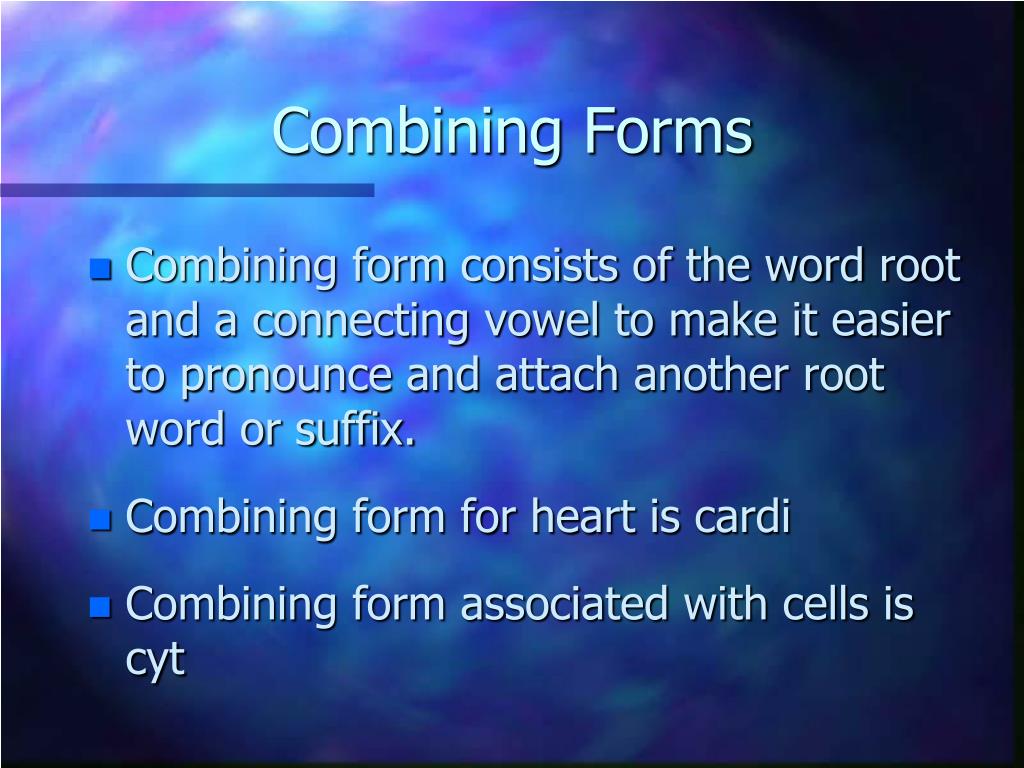
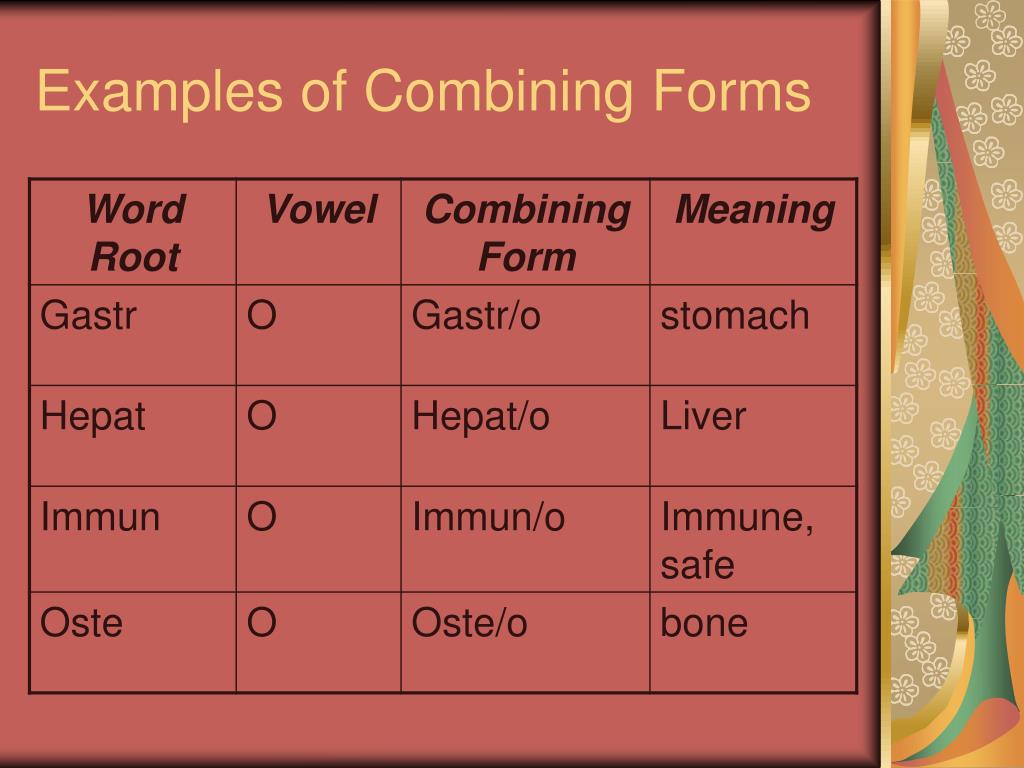
+cycl+(o)+dacry+(o).jpg)
